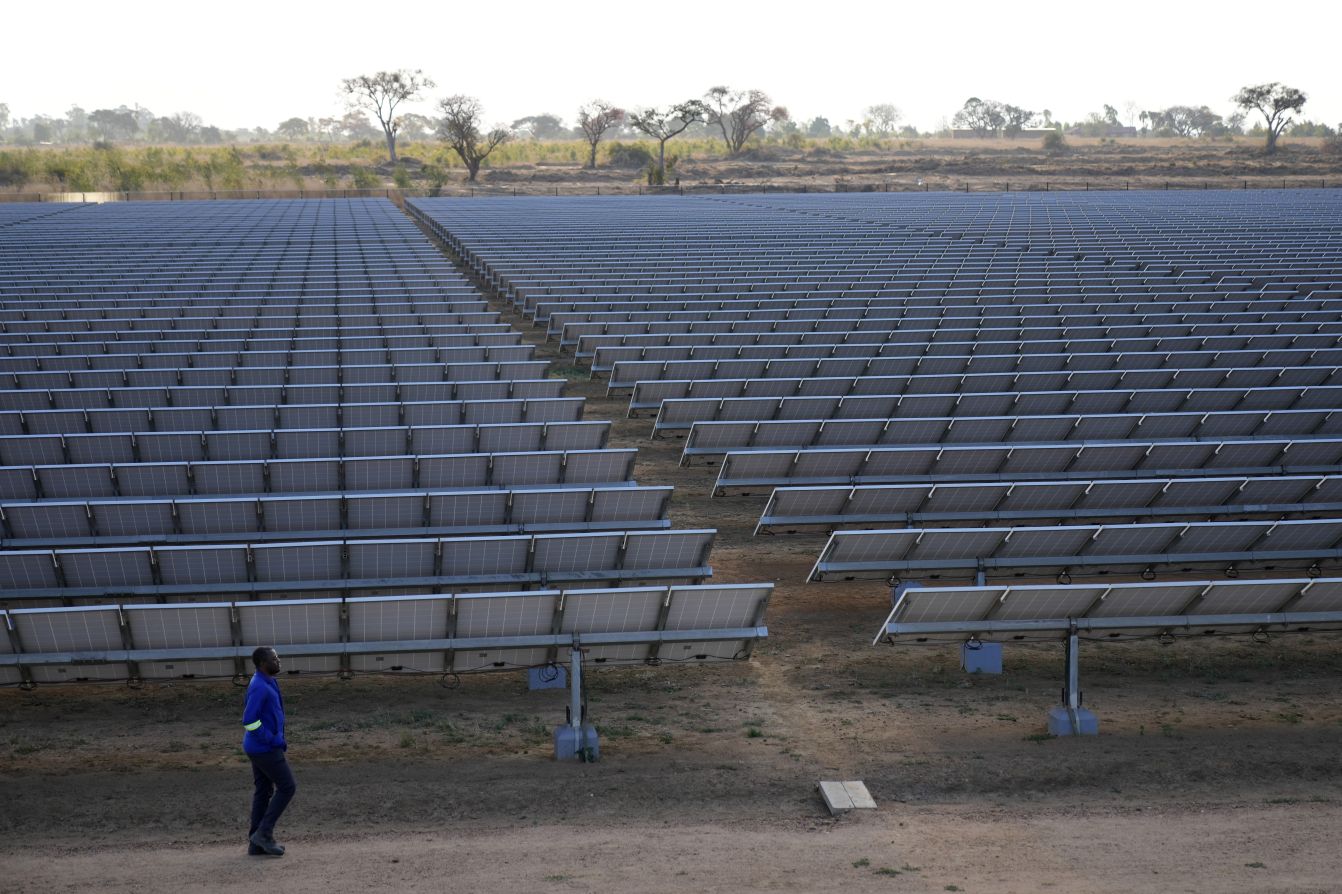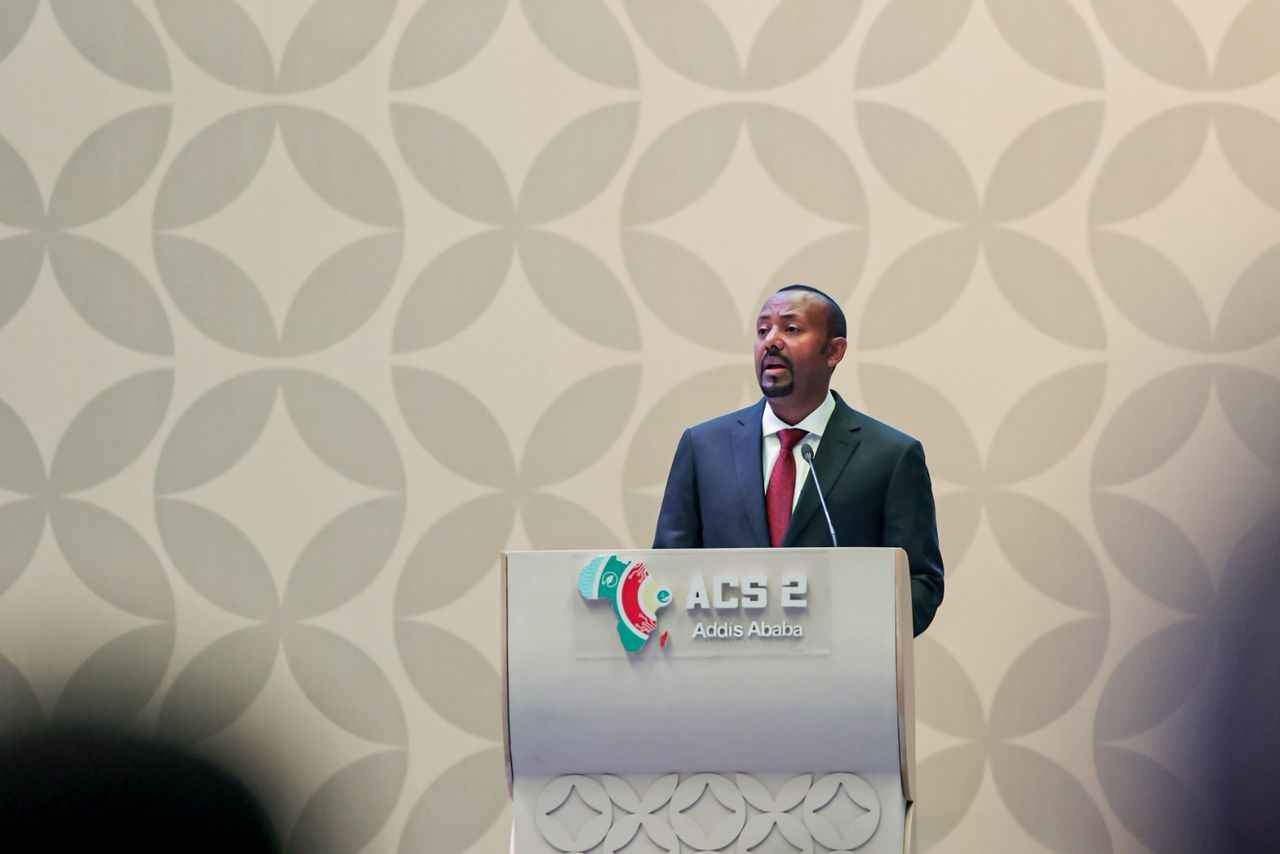- A new cooperation framework announced at the Africa Climate Summit aims to raise $100 billion from African development finance institutions and private banks for industrialization powered by renewable energy.
- For this ambition to prompt a structural shift, African and overseas capital will need to be raised without worsening debt and repayment for African governments, researchers and campaigners say.
- Summit host Ethiopia presented domestic tree planting, climate-resilient wheat, and hydropower initiatives as models for the 1,000 homegrown solutions it hopes an African Climate Innovation Compact can produce by 2030.
- Civil society, warning that climate finance for Africa remains loan-heavy, welcomed the push for African ownership and stressed that grants or similarly favorable terms for adaptation and loss-and-damage funding are needed if fairness is to match ambition.
ADDIS ABABA — African leaders attending the Africa Climate Summit in Addis Ababa this week have called for a new global partnership that treats the continent as an engine of climate solutions rather than a recipient of aid. Summit host and Ethiopian Prime Minister Abiy Ahmed set the tone at the opening on Sept. 8, declaring, “We are not here to negotiate our survival. We are here to design the world’s next climate economy.”
The summit’s three-day program will focus on nature-based solutions, technology, and energy systems on day one; adaptation and resilience in the face of advancing climate change on day two; and conclude with a decisive focus on “financing African-led solutions” on day three. Summit organizers say the goal is to bridge the persistent gap between political pledges and bankable projects.
To illustrate how this solutions-first framing can extend beyond speeches, the Ethiopian hosts are showcasing several domestic initiatives: a Green Legacy campaign the government says has planted more than 48 billion seedlings since 2019; a climate-resilient wheat program and nutrition drive, known as Yelemat Tirufat, intended to cut imports and raise rural incomes; and the imminent commissioning of the 5,000-megawatt Grand Ethiopian Renaissance Dam as a regional clean-power anchor.
Abiy paired that domestic portfolio with a continental proposal: an African Climate Innovation Compact (ACIC) that would link universities, research centers, startups and communities, aiming to surface 1,000 African solutions by 2030, underpinned — at least aspirationally — by $50 billion a year in blended finance.

‘Net exporter of climate solutions’
On the summit’s first day, centered on energy, technology, and nature-based solutions, African development banks and commercial lenders committed to mobilize more than $100 billion in the framework of the Africa Green Industrialization Initiative (AGII), which will build renewable-powered industrial clusters and green value chains.
The signatories include the African Development Bank, Afreximbank, Africa50, Africa Finance Corporation, and several of the continent’s largest private banking groups, working alongside the African Continental Free Trade Area (AfCFTA) secretariat.
Kenyan President William Ruto cast the initiative as a move “from conversation to concrete collaboration,” while AfCFTA Secretary-General Wamkele Mene said the point was to “mobilize African capital first,” shifting Africa’s posture from applicant to investment partner.
Following on the “driving green growth and climate finance solutions” tagline of its first edition in Nairobi in 2023, this second Africa Climate Summit announced its intentions as “Accelerating global climate solutions: Financing for Africa’s resilient and green development”.
The messaging is aimed at positioning the summit as a catalyst for strategic investments in green power to industrialize the continent without repeating the emissions produced in Europe, the U.S. or Asia; as well as vastly accelerating reforestation and adopting climate-smart agriculture to meet the needs of Africa’s growing population.

A solutions narrative — tempered by financial realities
Civil society and research groups welcomed the turn toward African ownership but cautioned that the financial instruments and accounting still fail basic equity tests. A new analysis by Development Initiatives (DI), a U.K.-based research group, finds that in 2022 nearly two-thirds (64.8%) of the $8.33 billion in overseas development aid to Africa for climate action was in the form of loans, not grants — adding to debt even in countries least responsible for the crisis.
Researchers point out that climate adaptation, Africa’s top priority, is still funded heavily through debt and is concentrated in a handful of countries. African countries categorized as least developed received a majority of their adaptation development assistance in the form of loans (56.9%); the World Bank’s International Development Association fund delivered 83% of its adaptation support as loans that year, according to data from DI.
Advocates argue that counting repayable instruments as “climate finance” obscures who is shouldering the fiscal effort. One line of critique, echoing positions tabled by the African Group of Negotiators, holds that loans (and even some bonds) should not be tallied as donor climate finance, or at minimum that the cost of repayment count toward recipients’ contributions rather than donors’ pledges under the UNFCCC.
The African Union Commission chair, Mahmoud Ali Youssouf, called for “fair, significant, and predictable” climate finance and for climate justice that recognizes Africa’s vulnerability as well as its potential role in supplying solutions.
The Paris Agreement itself urges donors to prioritize “public and grant-based resources” for adaptation in the most vulnerable countries — language civil society says must be reflected in the next global finance goal.

What $100 billion could mean — and what to watch
Backers of the AGII framework say the $100 billion target is less a single pot than a mandate to assemble capital around real projects — industrial parks powered by renewable energy, battery and green-fuels value chains, and cross-border transmission to move clean electricity to where it’s needed. Priorities include raising funds from domestic financial institutions and establishing joint project preparation platforms to expedite deal closures.
Whether that ambition actually prompts a structural shift hinges on a core test: can African capital truly lead concessional and private finance without deepening debt? The “mobilize African capital first” pitch is politically potent, but analysts and advocates, including the Pan African Climate Justice Alliance, a network of more than 2,000 grassroots groups, warn that unless adaptation finance is raised as grants, it will inevitably shift risk onto the most vulnerable countries and their citizens.
Raising money for climate action on these terms will require partners outside Africa to match the rhetoric, including through reforms to multilateral development banks’ business models and risk appetite that the continent’s negotiators pushed for at the COP27 climate summit in Egypt in 2022.

For now, the choreography in Addis sketches a hybrid approach: self-reliance and deal-making at home, paired with sharper demands on fairness abroad. In one line that captured that pivot, Abiy told partners, “Do not fund us because we are impacted, but invest with us because we are visionary.”
The Ethiopian government also used the opening to signal its bid to host COP32 in 2027, while Brazil invited Africa to help shape the agenda at the COP30 summit that it will host later this year.
Banner image: Ethiopia’s Abiy Ahmed and Kenya’s William Ruto at the Africa Climate Summit in Addis Ababa. Image courtesy Africa Climate Summit. (Public Domain)
Young people in Africa call for a fair increase in funding for climate adaptation
Multilateral development banks must prioritize clean & community-led energy projects (commentary)
FEEDBACK: Use this form to send a message to the author of this post. If you want to post a public comment, you can do that at the bottom of the page.
